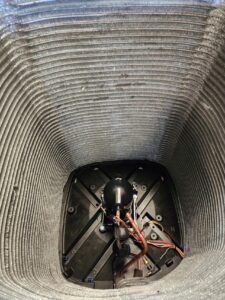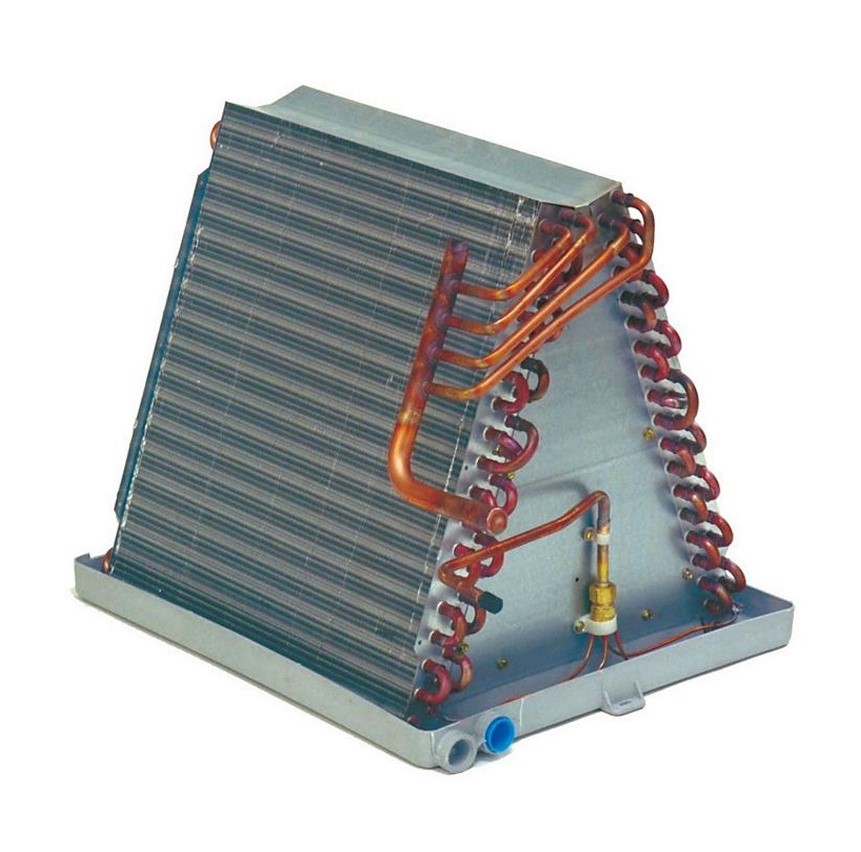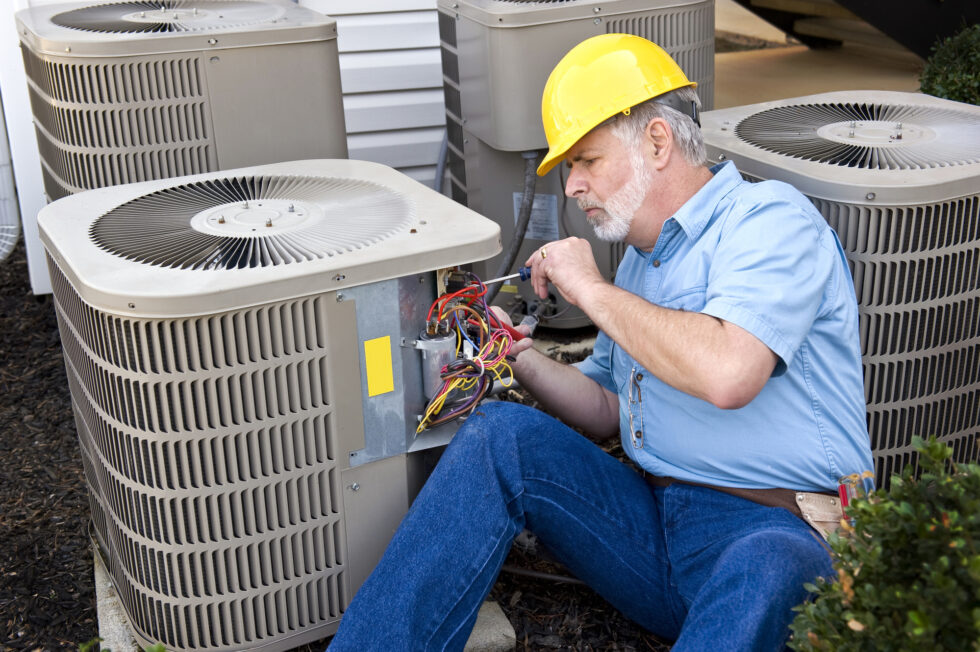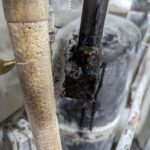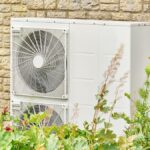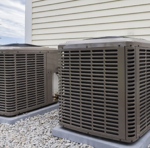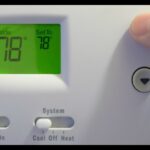If your air conditioner is running but not cooling the house, several factors could be at play. Common issues include thermostat settings – ensure it’s on ‘cool’ and set lower than room temperature. A dirty air filter can obstruct airflow, diminishing cooling efficiency. Problems with the evaporator coil, such as dirt accumulation or freezing, can also disrupt cooling. Additionally, malfunctions in crucial components like the compressor or condenser can impact performance. Lastly, an AC unit clogged with dust and debris might struggle to cool effectively. If these basic troubleshooting steps don’t help, it’s advisable to seek assistance from a professional HVAC technician for a more thorough inspection and repair.
Below is are the detailed problems that can cause your air conditioner to run but not cooling
Thermostat Issues: Diagnosis and Solutions
Common Problems with Thermostats
- Incorrect Mode or Temperature Setting: The thermostat might not be set to ‘cool’ mode, or the temperature could be set too high, causing the AC to run without cooling.
- Calibration Issues: A thermostat that is not calibrated correctly may not trigger the AC effectively, leading to inadequate cooling.
- Faulty Wiring: Damaged or old wiring within the thermostat can disrupt its functionality, preventing proper temperature regulation.
Effective Solutions for AC thermostat
- Adjust Settings: Ensure the thermostat is on ‘cool’ mode and set to a temperature below the room’s current temperature.
- Check Calibration: If calibration seems off, it might need professional adjustment to accurately reflect and control indoor temperatures.
- Inspect and Replace Wiring: If you suspect wiring issues, consult a professional for inspection and replacement.
Additional Tips on AC thermostat
- Avoid Heat Sources: Keep the thermostat away from direct sunlight or heat-producing appliances, as these can affect its readings.
- Ensure Proper Insulation: Close all windows and doors to prevent outside air from affecting the thermostat’s reading.
- Vent Management: Make sure all vents are open and unobstructed for optimal airflow and efficient cooling.
By comprehensively addressing these aspects, you can ensure your thermostat accurately controls your air conditioner, maintaining a comfortable and cool environment in your home.
Dirty or freezing evaporator coil
The evaporator coil in your air conditioner can become dirty or freeze, significantly hindering its cooling efficiency. When the coils are dirty, they can’t effectively transfer heat, and if they’re frozen, air cannot flow through them properly.
Solutions for Dirty or Frozen Coils
- Cleaning a Dirty Coil: If the coil is merely dirty, it needs to be cleaned to restore proper functioning. This involves turning off the unit and carefully removing debris and dirt from the coils.
- Dealing with a Frozen Coil:
- Turn Off the AC: First, switch off the unit to allow the frozen coil to thaw. This is a crucial step to prevent further damage.
- Identifying Underlying Causes: Common causes for a frozen coil include:
- Dirty Air Filters: Restricted airflow due to clogged filters can lead to freezing. Replace or clean the air filters.
- Malfunctioning Fan: A faulty fan can impede airflow, causing the coil to freeze. Inspect and repair if necessary.
- Refrigerant Leak: Low refrigerant levels can also cause freezing. This requires professional attention.
- Professional Inspection: In cases of refrigerant leaks or complex issues, it’s essential to call in HVAC experts. They can accurately diagnose and fix problems like leaky coils or other malfunctions.
Expert Intervention
- Calling the Professionals: It’s important to involve experienced HVAC technicians, especially when dealing with refrigerant issues or complex system malfunctions. They have the expertise and tools to safely and effectively resolve these issues.
By addressing these problems promptly and with professional help, you can ensure your air conditioner runs efficiently and cools your home effectively.
Clogged or dirty Air Filter
Clogged Air Filter Impact:
A frequently encountered issue is a clogged or dirty air filter, which can severely compromise your air conditioner’s performance. The accumulation of dirt and debris impedes airflow, diminishing the efficiency of the system and hindering its cooling capacity.
- Reduced Airflow and Cooling Efficiency: A clogged filter restricts the passage of air, causing reduced airflow. This can lead to insufficient cooling, making your AC struggle to maintain desired temperatures.
Solutions for a Clogged Filter
- Regular Inspection and Maintenance:
- Monthly Check-Up: Homeowners should routinely inspect their air filter for any signs of clogging or excessive dirt accumulation.
- Frequency of Replacement or Cleaning: Follow the manufacturer’s guidelines for replacing or cleaning the filter. Typically, this should be done every 1-3 months, but more frequent changes may be necessary if you have pets or allergy concerns.
- Proactive Maintenance for Enhanced Performance:
- Pet Owners and Allergy Concerns: If you have pets or occupants with allergies, consider more frequent filter changes to maintain optimal indoor air quality.
Seeking Professional Assistance
- Beyond DIY Measures: If the problem persists despite regular filter maintenance, it may indicate underlying issues beyond your expertise. In such cases, seeking professional assistance is crucial.
Expert Guidance
- Professional Intervention: HVAC professionals possess the knowledge and skills to diagnose and address more complex issues related to your air conditioning system. If a clogged filter is just the symptom of a larger problem, relying on their expertise ensures comprehensive solutions.
By staying vigilant about your air filter’s condition and taking proactive measures, you can maintain efficient airflow and maximize your air conditioner’s cooling performance.
Dirt Accumulation on outdoor unit (Compressor, Condenser)
Your air conditioner’s outdoor unit, comprising the compressor and condenser, plays a pivotal role in the refrigeration cycle. Any malfunction in the compressor or issues with the condenser unit can substantially diminish the cooling efficiency.
Dirt Accumulation:
- Natural Element Impact: The outdoor unit, particularly the condenser, is exposed to the elements, making it susceptible to dirt and dust accumulation.
- Airflow Obstruction: Accumulated dirt can impede proper airflow, hindering the unit’s ability to facilitate effective heat exchange.
DIY Prevention Measures
Maintaining a Clean Surrounding:
- Clearing Vegetation: Ensure the area around the outdoor unit remains clear of bushes and trees, preventing potential blockages.
- Periodic Cleaning Routine: Regularly clean the condenser fins and wash the condenser with soap and water. This aids in preventing dirt buildup that may compromise cooling efficiency.
- Off-Season Protection: When the AC is not in use, securely cover the condenser to shield it from debris and environmental factors.
Caution Against DIY Repairs
- Professional Expertise Recommended: While maintaining a clean outdoor unit is crucial, attempting repairs without professional expertise is not advised. Only a skilled HVAC technician should handle repairs and maintenance tasks to ensure the system’s integrity.
Seeking Professional Assistance
- Signs of System Inefficiency: If your air conditioner is running but not effectively cooling, it may be an indication of issues beyond DIY remedies. Seeking the expertise of an HVAC professional is paramount for accurate diagnosis and resolution.
Maintaining Indoor Air Quality
- Supplemental Measures: If dirt and dust from the outdoor unit have affected indoor air quality, considering an air filtration system can enhance household air purity.
By proactively addressing dirt accumulation and involving HVAC professionals when needed, you can uphold the efficiency of your outdoor unit, promoting optimal cooling performance.
Refrigerant Leak Issues in Air Conditioning Systems
Identifying a Refrigerant Leak
- Signs of Trouble: A refrigerant leak is a common issue that can hinder your air conditioner’s ability to cool your home effectively. Key indicators include:
- Ice Buildup: Noticeable ice formation on the refrigerant lines.
- Unusual Noises: Hissing sounds emanating from the unit.
- Inadequate Cooling: A noticeable decrease in cooling efficiency, potentially making your home feel warmer.
The Role of Refrigerant
- Heat Transfer Efficiency: Refrigerant is the lifeblood of your AC system, responsible for absorbing heat from indoor air and releasing it outdoors. A leak leads to a decrease in refrigerant levels, impairing this critical heat transfer process.
The Risks of a Refrigerant Leak
- Compromised Cooling: With less refrigerant, the AC struggles to cool effectively, impacting your comfort.
- Potential Damage: Prolonged operation with a leak can cause further damage to the system.
Professional Intervention is Crucial
- Expert Repairs Needed: Refrigerant issues are not suitable for DIY approaches. They require specialized equipment and skills to safely and effectively resolve.
- Safety and Compliance: Handling refrigerant necessitates adherence to safety standards and environmental regulations.
Immediate Action Recommended
- Contacting a Professional: If you suspect a refrigerant leak, it’s imperative to contact an HVAC professional promptly. Delaying repairs can exacerbate the problem and lead to increased repair costs.
By recognizing the signs of a refrigerant leak and understanding its impact on your AC system’s performance, you can take timely action. Always rely on qualified professionals to handle refrigerant-related issues to ensure safety and efficiency.
Incorrectly or Improperly Sized AC Units
The Importance of Correct AC Unit Sizing
- Matching Size to Space: The efficiency and effectiveness of your air conditioner heavily depend on it being the right size for your space. An AC unit that’s either too small or too large for your home can lead to significant cooling problems.
Problems with Oversized or Undersized Units
- Too Small: An undersized unit struggles to cool your home adequately, leading to constant operation without reaching the desired comfort level.
- Too Large: Conversely, an oversized unit can cause short cycling, where it turns on and off frequently, impairing efficiency and failing to properly dehumidify the air.
Professional Sizing and Installation
- Expert Assessment: To avoid these issues, it’s crucial to have a professional HVAC technician accurately size your unit based on your home’s specific requirements.
- Correct Installation: Proper installation by a qualified technician ensures that the unit operates at its optimal capacity and efficiency.
The Consequences of Incorrect Sizing
- Ineffective Cooling: An AC unit that is not appropriately sized or installed can be a primary reason for inadequate cooling in your home.
- Long-term Costs: Incorrect sizing not only affects comfort but can also lead to increased energy bills and a shorter lifespan for the unit.
Solutions and Recommendations
- Consultation with Professionals: If you suspect your AC unit is incorrectly sized, consulting with HVAC experts is the best course of action. They can provide guidance on proper sizing and discuss potential replacement options tailored to your home’s needs.
Ensuring your AC unit is correctly sized and installed is vital for efficient and effective cooling. Professional advice and services are essential in this process to guarantee optimal performance and avoid unnecessary costs and discomfort.
Addressing Ductwork Issues in Air Conditioning Systems
The Role of Ductwork in Cooling Efficiency
- Effective Air Distribution: Ductwork is essential for distributing cool air throughout your home. Issues within these air channels can significantly hinder your AC’s ability to cool effectively.
Common Ductwork Problems
- Leaks and Blockages: Two prevalent issues in ductwork are leaks and blockages. Leaky ducts fail to transport cool air efficiently, leading to uneven cooling and wasted energy. Blockages, on the other hand, obstruct the airflow, reducing the system’s overall cooling capacity.
Identifying and Resolving Ductwork Issues
- Signs of Ductwork Problems: If your air conditioner runs but fails to cool your home adequately, it’s a clear indication that your ductwork might need attention.
- Professional Inspection and Repair: To accurately diagnose and fix issues like leaks or blockages in the ductwork, professional inspection is recommended. A skilled technician can identify problem areas and provide appropriate solutions.
Sealing Leaky Ductwork
- Importance of Sealing: Properly sealing any leaks in the ductwork is crucial for restoring the efficiency of your air conditioning system. Leaky ducts can lead to significant energy loss and reduced cooling effectiveness.
- Expert Assistance: Contacting a professional for a thorough examination and sealing of your ductwork can ensure that cool air is efficiently delivered to all parts of your home.
Conclusion
- Professional Consultation: If you suspect ductwork issues are causing your air conditioner to run without adequately cooling your home, it’s advisable to seek professional help. An expert can provide a comprehensive assessment and undertake necessary repairs or cleaning, ensuring your AC system operates at its best.
By addressing ductwork issues promptly and professionally, you can significantly improve the cooling efficiency of your air conditioning system, leading to a more comfortable and energy-efficient home.
Aging Air Conditioning Systems
This can also be a reason why your AC is running but not cooling
The Impact of Age on AC Performance:
Air conditioners typically have a functional lifespan of around 15 years. Beyond this age, they often lose efficiency and struggle to cool your home effectively.
Challenges with Older AC Units
- Reduced Efficiency: Older air conditioners, especially those surpassing the 15-year mark, are not as efficient as modern models. Their outdated technology and worn components often lead to poor cooling performance.
- Increased Energy Consumption: As older units struggle to cool your home, they tend to consume more energy, leading to higher utility bills and a larger carbon footprint.
Recognizing the Need for an Upgrade
- Assessing Your AC’s Age: If your air conditioner was installed over 15 years ago and hasn’t been significantly updated or refurbished, it’s likely contributing to inadequate cooling in your home.
- Performance Issues: An old AC unit that hasn’t been properly maintained or upgraded may not cool your house effectively, indicating the need for a thorough assessment.
Moving Forward with a New AC System
- Benefits of Upgrading: Upgrading to a new air conditioning system can significantly enhance your home’s cooling efficiency. Modern AC units are designed to provide optimal cooling with lower energy consumption.
- Consulting a Professional: Consider consulting with HVAC professionals to explore the latest air conditioning options. A new system can offer improved cooling, energy efficiency, and potentially lower maintenance costs.
Conclusion
Evaluating Your Options: If your AC unit is more than 15 years old and struggling to cool your home, it might be time to consider upgrading. Newer models offer better performance and energy efficiency, ensuring comfortable temperatures during summer months without excessive energy use.
By addressing the age and condition of your air conditioning system, you can make an informed decision about upgrading to a newer, more efficient model, thereby improving your home’s comfort and reducing energy costs.
Tripped circuit breaker of the AC
When your air conditioner isn’t running at all, one of the primary things to check is your home’s circuit breaker. A tripped breaker can cut off power to your AC unit, preventing it from operating and hence, not cooling your home.
Steps to Check and Reset the Circuit Breaker
- Locating the AC Breakers: Navigate to your breaker panel and find the breakers labeled for the air conditioning system.
- Resetting the Breaker: Carefully flip the AC breakers off and then back on. This action can often reset the power supply to your AC unit.
Evaluating the Outcome
- Successful Reset: If resetting the breaker gets your AC running again, the issue is resolved, and your system should start cooling your home.
- Persistent Problem: In cases where resetting the breaker doesn’t restore AC functionality, there may be an underlying issue that needs further investigation.
Understanding the Technical Aspects
- Simple Troubleshooting: This process is a basic troubleshooting step that homeowners can safely perform without needing specialized technical knowledge.
- Safety Precautions: Ensure safety while handling electrical components like circuit breakers. If you’re unsure or uncomfortable, it’s advisable to seek professional help.
Conclusion
- Seeking Further Assistance: If the issue persists after attempting to reset the breaker, it’s recommended to consult a professional HVAC technician. They can diagnose and address any deeper electrical or mechanical issues with your air conditioner.
Resetting a tripped circuit breaker is a straightforward step in troubleshooting an air conditioner that isn’t running. It’s an essential and often effective initial action to restore power and function to your AC unit. However, if this doesn’t resolve the problem, professional expertise may be required to identify and fix any more complex issues.

